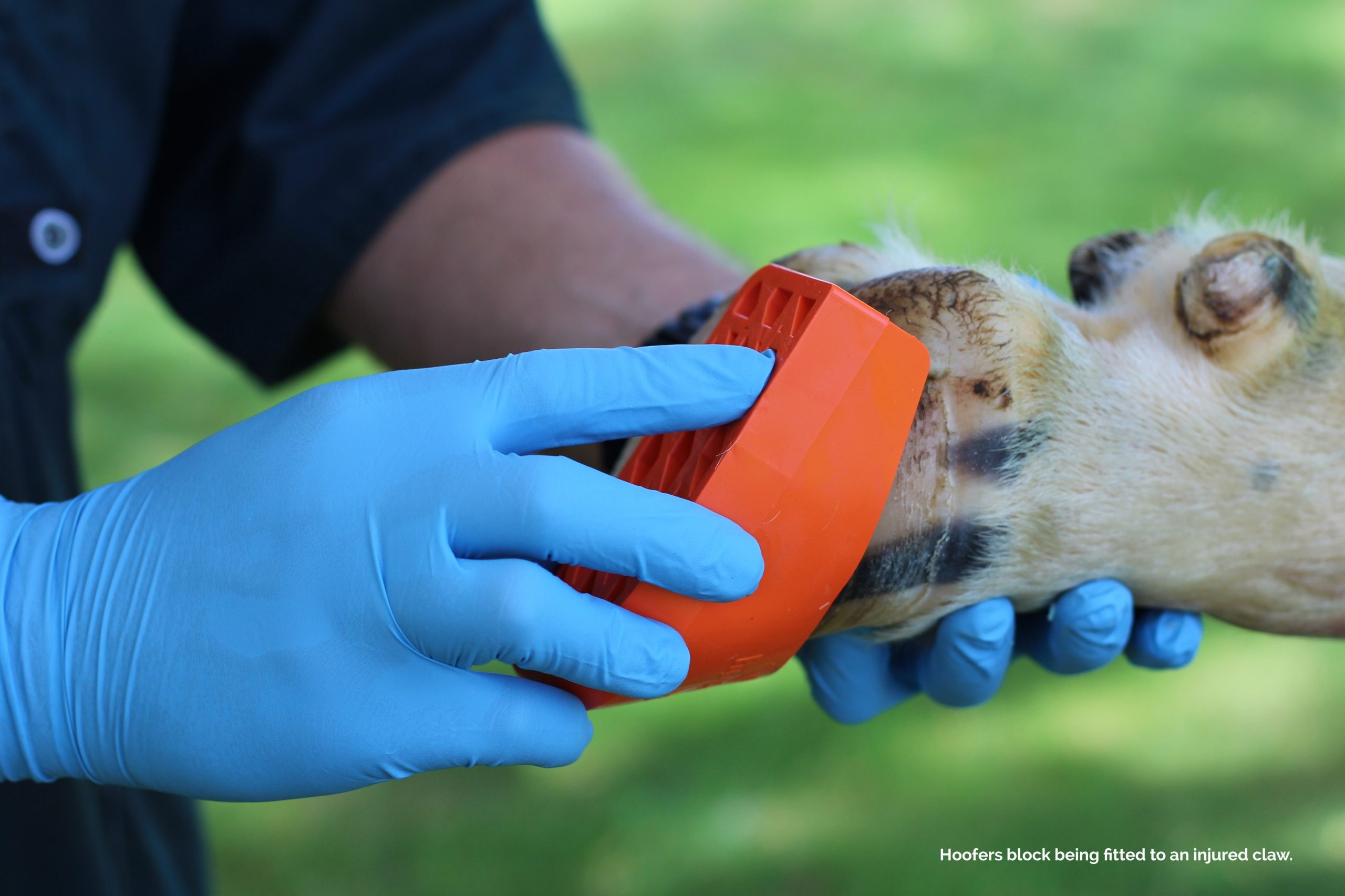Detecting lameness
Spotting lame cows is not one of our strong suits. If farmers can detect lameness earlier, it can benefit the cow’s recovery and can help prevent future lameness cases. Words Emma Cuttance.

Identifying lame cattle remains one of the biggest hurdles to lameness control on dairy farms worldwide, with the situation as worrying in New Zealand as anywhere else in the world. NZ dairy farmers are missing 75% of lame animals at any point in time (Fabian et al., 2014), and are taking on average over three weeks to identify clinically lame animals (Alawneh et al., 2012). Yet without identifying lame cattle early and treating them appropriately, an optimal outcome from treating them isn’t possible.
The longer the animal is lame for, and the greater number of cases she has, the more likely she is to have developed permanent damage in the hoof. Furthermore, there is now strong evidence that a previous case of lameness is the biggest predictor of a future case of lameness (e.g., Randall et al., 2018).
Research into prevention of a disease should be a priority over treatment; however, early detection and prompt effective treatment (EDPET) itself is a preventative measure. Thus, improving the treatment outcomes of lame dairy cattle may not only benefit the animal at the time, it also may act as a preventative measure for further lameness episodes (Leach et al., 2012, Wilson et al., 2022).
A four-point (simplistic) plan is proposed for implementing EDPET on farms.
Identification and treatment
Lameness identification and treatment should be a designated and dedicated task onfarm.
Step 1: Early detection of lameness
- Lameness detection is typically based on visual observation of the locomotion of each animal.
- Lameness scoring for the whole
herd should be completed regularly using the DairyNZ scoring system by either a trained staff member or external provider who can carry out this service. - However, even with regular lameness scoring, training staff to regularly observe cows and identify lame animals daily is the main way to ensure early detection.
- The observer should be able to determine the severity of the lameness and which limb is affected.
- Lameness records should be kept (i.e. cow number, date, affected limb, affected claw, lesion/disease type, treatments, outcome of the treatment). By keeping good records, you can begin to understand lameness on your farm, e.g. types and seasonal patterns.
- Cows should be considered lame if they are assigned a score of 2 or more.
- If lameness incidence (number of cows treated by trained staff over one season) is >20% for the season, or 5% in one month then seek professional help (e.g. veterinarian, or a Healthy Hoof Provider).
Step 2: Examine claw, trim and determine cause
- Any cow recorded as a lameness score 2 should be examined, ideally within 24 hours, and no longer than 48 hours.
- Urgent action (within 24 hours) is required if a cow is recorded as a lameness score 3.
- The cause of the lameness needs to be determined for each cow.
- The affected limb needs to be properly secured for detailed evaluation.
- Examination and treatment of the lame hoof should follow the guidelines set out in the DairyNZ Lameness Field Guide, with the primary pain-inducing claw and lesion identified using hoof testers.
- Cows should receive a therapeutic trim if required, particularly if the cause of lameness is determined to be white line disease.
- Know your limits – seek advice from a lameness professional if necessary.
Step 3: Manage the pain
- Lameness is painful, therefore, providing pain relief can improve the welfare and outcome of lame cows.
- A block should be applied to the non-lame claw if white line disease or sole injuries are the determined cause of lameness. Training is required for all staff who will be placing these on.
- All lame animals should receive a three-day treatment of NSAIDs.
Step 4: Manage recovery
- Daily monitoring of cows scored as a lameness score 3, and weekly monitoring of cows scored as a lameness score 2 will allow for the progression of recovery or deterioration of the condition to be recorded.
- If the animal deteriorates or remains a lameness score 3 (severely lame or non-weight bearing) veterinary advice should be sought within 24 hours.
- If the animal has remained at a lameness score 2 for two weeks the animal should be re-examined by farm staff, or veterinary advice sought.
- Lame cows should be kept in a separate mob and on pasture close to the dairy shed so they do not have to walk too far.
- Time on concrete must be minimised for currently lame animals, consider timing of when the lame animals are brought into the shed.
Improving the detection and treatment of lameness has the advantage of being applicable for all dairy farms. Even just improving one of these steps will make a big difference.
Working on prevention of lameness remains a critical step in managing this problem, but some of the above steps may just help with a few small “wins” for managing this problem on your farm.
How much is lameness costing you? Visit dairynz.co.nz/tools/lameness-calculator.
References taken from The Veterinary Journal and Journal of Dairy Science.
- Emma Cuttance is a veterinary epidemiologist and managing director of EpiVets.




